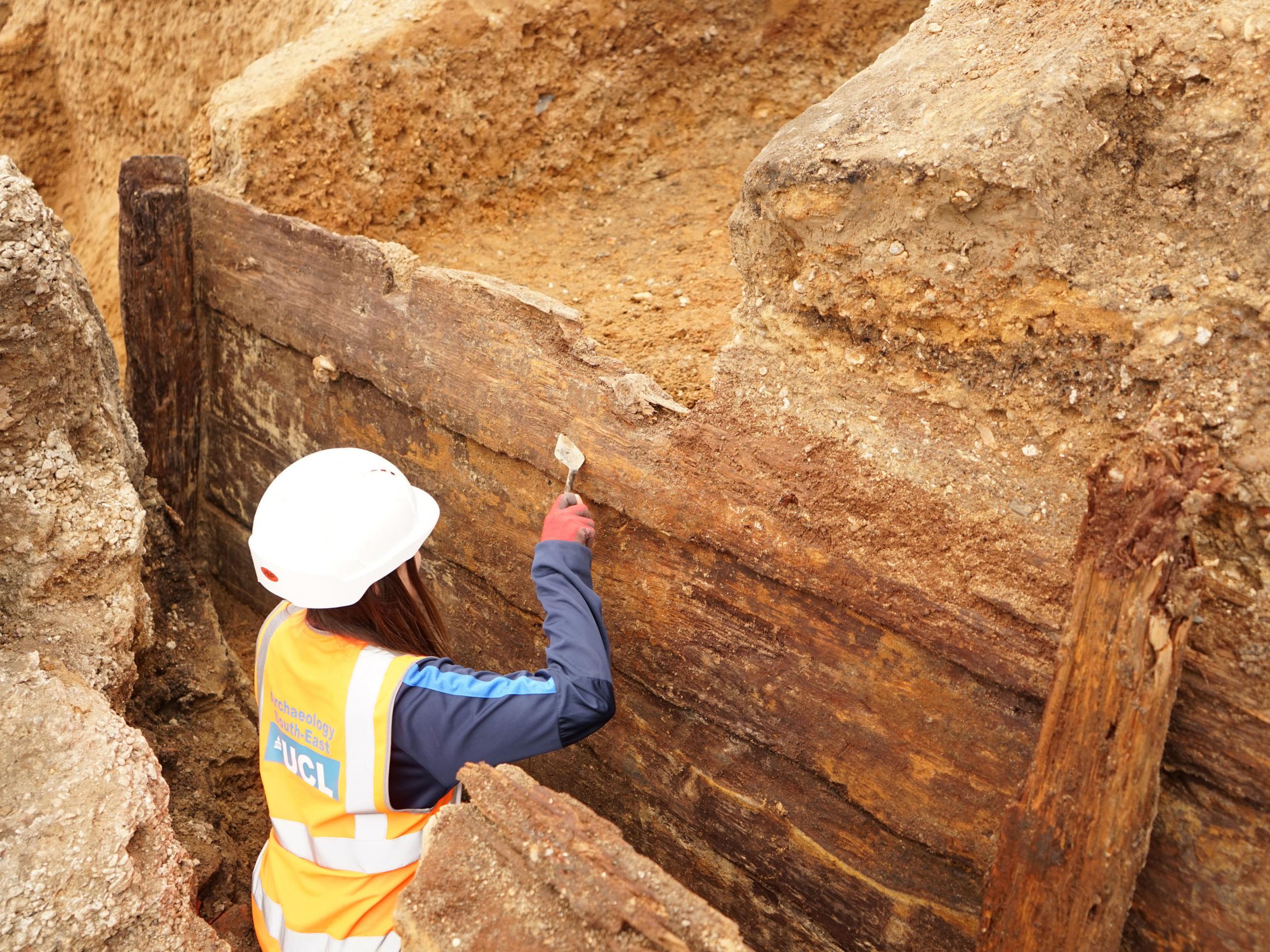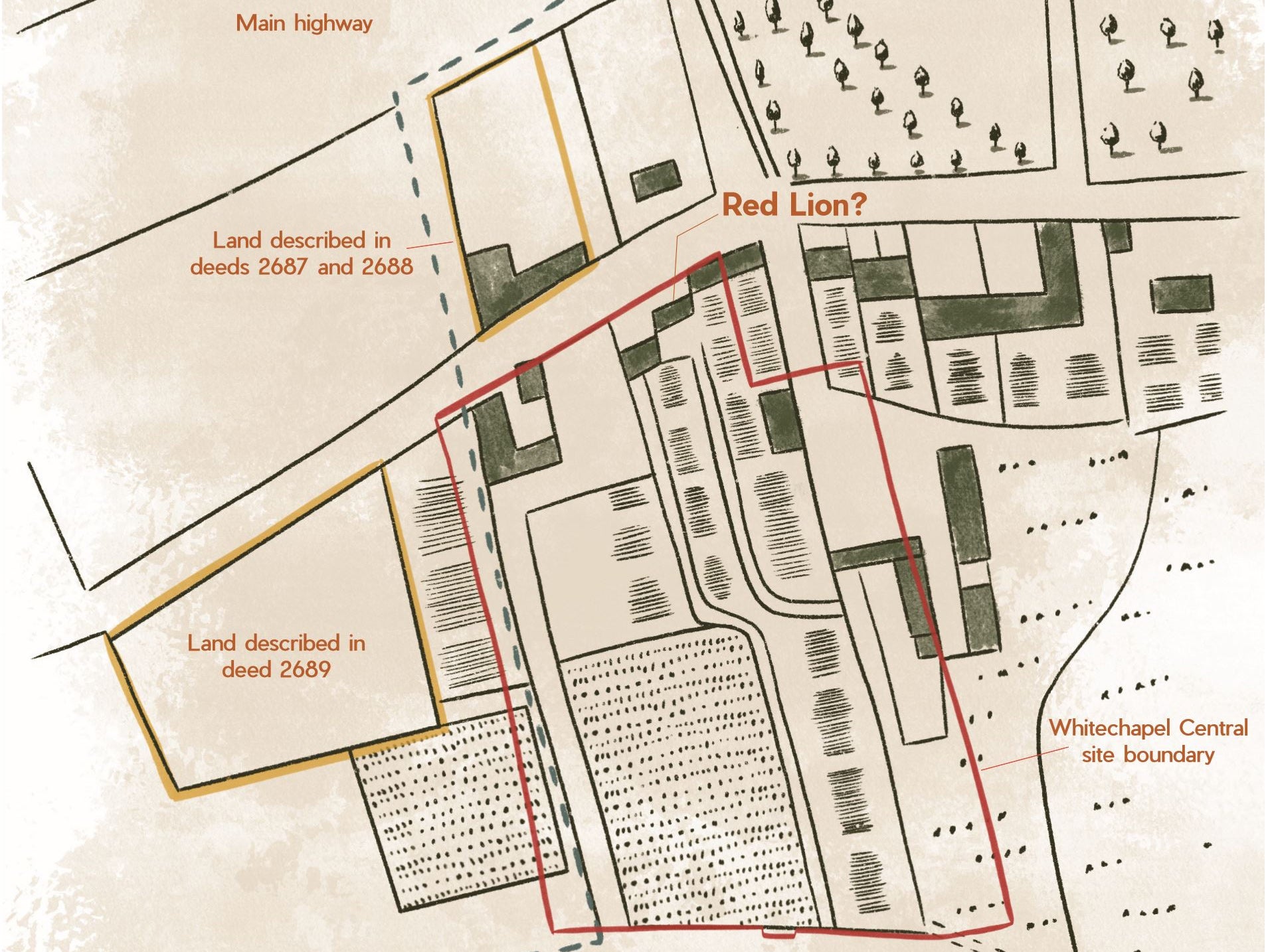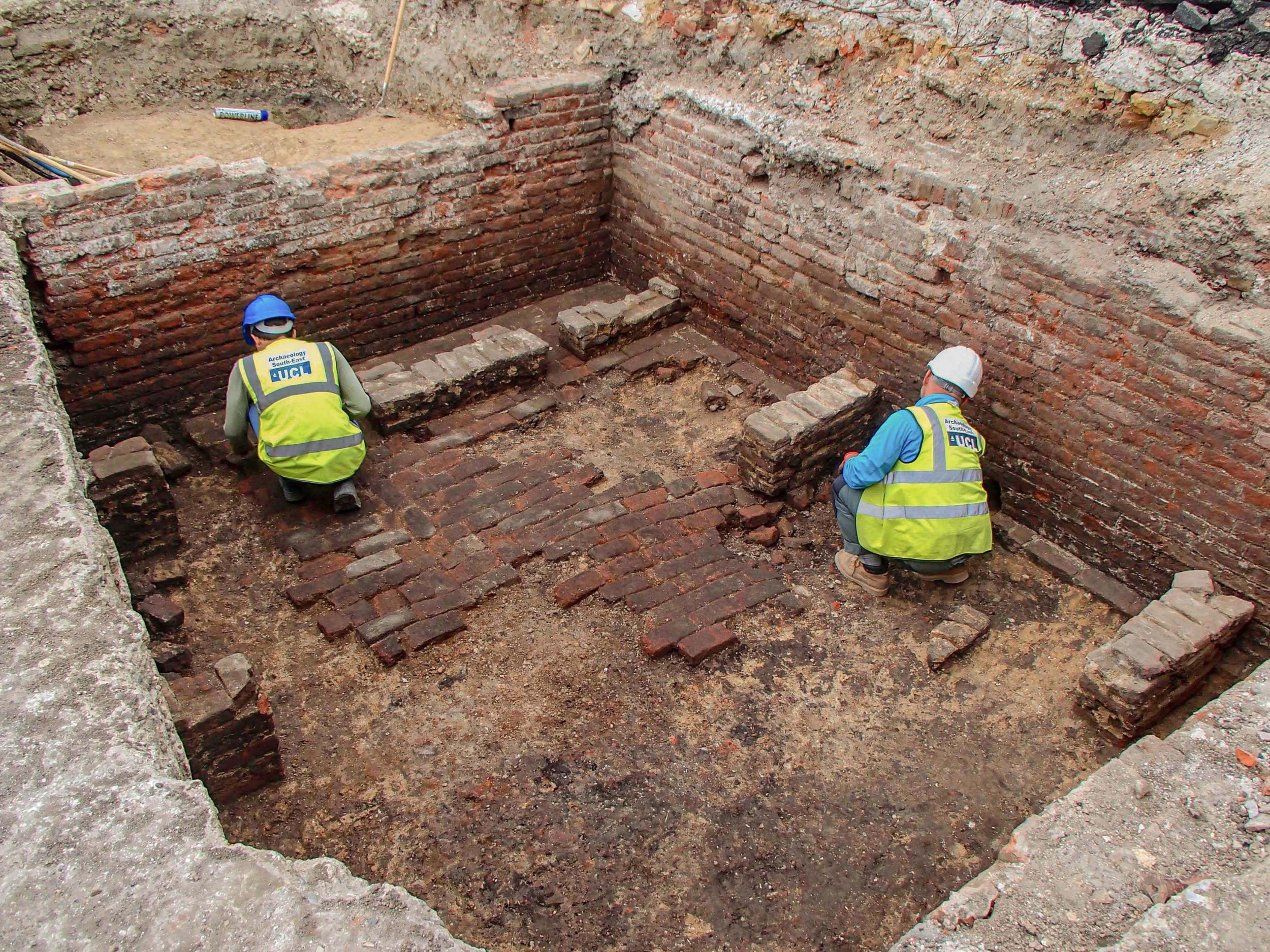London’s oldest theatre discovered in East End excavation
The Red Lion was built in Tudor times when entertainment was heavily restricted, David Keys explains

Archaeologists have discovered London's oldest theatre – an Elizabethan playhouse constructed in the mid-16th century.
Known as the Red Lion, it represents a major "missing link" in the history of English drama.
In medieval, and indeed often in Tudor times, performances that were dominated by Biblical subject matter – while by the time of Shakespeare, many purely secular plays were being performed, often in purpose-built theatres. They were usually staged in inn courtyards and in university and other halls.
The new discovery, in Whitechapel, helps fill in the gap between those two traditions.
The Red Lion was a drinking establishment which, in 1567, allowed London's first purpose built theatre to be constructed on its property.
However, it's likely that many of the plays performed there were still Biblical, rather than purely secular in nature.
Certainly the Red Lion's very first performance was a spectacular (now long-lost) drama called The Story of Samson – an account of the action-packed exploits of the Biblical superman who sacrificed his life to oppose paganism.
The discovery is also important because it was the Red Lion which paved the way for the slightly later theatres where the secular plays of Shakespeare, Marlowe and others were performed.
In Tudor London, theatres were politically and culturally ultra-controversial ventures. Indeed, they could only be built outside the jurisdiction of the City of London – partly because the extreme Protestant puritans who often ran the City considered theatres to be “an offence to the godly”, a “hindrance to the Gospel” - and schools “for all wickedness and vice”. Theatre-goers were seen as “the worst sort” of “evil and disordered people” who skipped work “to mis-spend their time”.
In a sentiment that resonates with our own times, they also thought that crowded theatrical events were plague infection risks.
As far as is known, most or possibly all of the plays performed at the Red Lion have been lost. That is partly because many plays in Tudor times were never published in printed form. Indeed the Red Lion's opening drama – The Story of Samson (playwright unknown) – was almost certainly never printed, possibly because London's monopoly printing organisation (a guild known as the Stationers Company) refused to print it, potentially on the grounds that a religious topic was being over-visually portrayed.

Indeed, they had extraordinary legal powers of censorship and could even seize unsuitable publications and haul their unfortunate authors before the ecclesiastical courts.
“The Red Lion had a particularly varied and interesting history,” says the excavation director, Stephen White of Archaeology Southeast, University College London's archaeological unit.
The site started off life in about 1500 as a farmhouse. Then, by circa 1530, it had also become a likely unofficial drinking establishment.
Then, in the mid-1560s a key character in the history of Tudor theatre, a man called John Brayne (a later venture of whose ultimately became associated with Shakespeare) approached the farm owner and proposed building London's first playhouse on his land, immediately adjacent to his farm and drinking establishment.
A mutually beneficial deal was struck and the unroofed wooden structure was erected in 1567, though but not without rancour – a bitter lawsuit between Brayne and the carpenters who had constructed the edifice. The dimensions of the stage, revealed by the archaeological excavation, were exactly as described in a Tudor legal document.
Apart from the stage, the apparently multi-level auditorium and various coins and drinking vessels, the only definitively theatre-related artefacts discovered by the archaeologists were fragments of large numbers of the green-glazed ceramic money boxes almost certainly used to collect the entry payments provided by the theatre's customers. These green-glazed money box fragments are also typical of later Tudor playhouses.

Theatre owners used them to collect the cash and then smashed them to recover the money. That simple "cash and smash" system helped prevent staff pilfering any of the coins.
But less than a decade after the Red Lion was constructed, Brayne teamed up with his brother-in-law to build another, this time much bigger, theatre, just a mile to the west, in Shoreditch.
At that juncture the Red Lion seems to have ceased functioning as a theatre, though the farmer/publican continued to use the theatre structure – now as a dog-fighting venue.
Indeed, the archaeologists have discovered the remains of dozens of dogs, some of them still bearing the injuries they died from, which included unhealed wounds from major bites to their skulls and legs.
What's more, an analysis of the dogs' jaws reveals that some of their more lethal teeth had been filed down, probably in order to prolong the fights by ensuring that the combatants died of multiple injuries, rather than a quick single killer bite.
The excavation, carried out by Archaeology Southeast, also revealed what the dogs were being fed. Evidence suggests that the farmer obtained boiled horse legs, probably from Tudor London's glue factories, and gave them to the hungry hounds before or after fights.
Apart from the Civil War and Cromwellian period (when such ungodly activities were discouraged), the dog-fighting and possibly other similar pursuits went on in the former playhouse until about 1700.
The Red Lion's founder, John Brayne, probably originally a grocer, funded the construction of that first English theatre and nine years later provided most of the initial finance for its successor (The Theatre in Shoreditch) but he ended up being deprived of his share in that much more profitable venture by his brother-in-law business partner, James Burbage, and was finally reduced to bankruptcy, eventually dying penniless. The story had all the ingredients of either a Biblical or Shakespearean drama.
Although the excavation took place last year, it was only last month that the post-excavation analysis of all the material and data provided sufficient evidence to demonstrate with a high degree of confidence that the remains were indeed those of London's long-lost first theatre.
The analysis of literally tens of thousands of pottery fragments, animal bones and other finds from this important historic site will continue later this year and in 2021.
Join our commenting forum
Join thought-provoking conversations, follow other Independent readers and see their replies
Comments
Bookmark popover
Removed from bookmarks